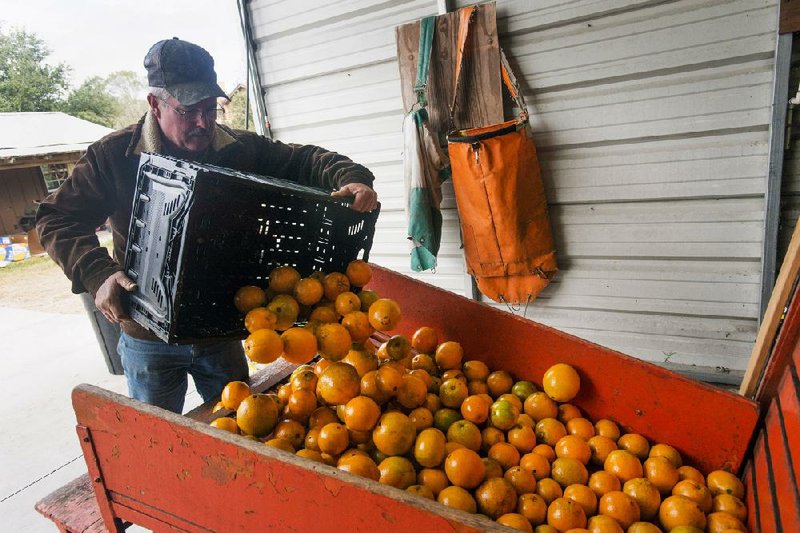U.S. crops are escaping record-setting cold weather with little damage, while the arctic blast drove cattle prices to a record as animals struggle to gain weight.
The coldest spots in Florida citrus groves were near freezing, but oranges aren’t damaged unless temperatures are below 28 degrees for a few hours, said Dale Mohler, a senior meteorologist at Accu-Weather Inc. in State College,Pa. Snow cover helped insulate wheat plants, according to DTN/Progressive Farmer. Cattle prices extended a rally to a record for the seventh straight session.
Frigid temperatures strangled transportation routes around the country including interstate highways, airlines and rails. They also led to a surge in energy demand that pushed power in Texas to more than $5,000 a megawatt hour for the first time and caused disruptions at oil refineries in Memphis and Illinois. Orange-juice futures fell Tuesday after climbing 2.8 percent Monday, the most since early November.
“The worst of it has gone by, especially in the Midwest,” said Claudio Oliveira, the head of trading at Castlestone Management LLC in New York. “I do expect grain prices to come off now, and I’d expect the same thing to happen in the orange-juice market.”
Monday’s low temperature in Chicago reached a record for the date of minus 16 degrees, beating the mark of minus 14 set in 1884 and 1988, according to the National Weather Service. At 8 a.m. Tuesday, it was 4 degrees in New York, breaking a record for the date set in 1896, AccuWeather said.
Orange juice for March delivery traded 0.6 percent lower at $1.43 a pound Tuesday on the ICE Futures U.S exchange in New York. Prices jumped 19 percent last year as the U.S. Agriculture Department forecast Florida’s crop would shrink to the smallest since 1990 as the citrus greening crop disease hampers groves. Futures climbed Monday on concern that cold air would further reduce supplies.
“The bullet missed them,” Mohler of AccuWeather said. “I don’t think this even damaged the vegetable crops, tomatoes and strawberries, which are more susceptible.”
While Florida’s weather will be colder than normal through today, temperatures will stay in the upper 30s, posing no threat to trees, said Kyle Tapley, a meteorologist with MDA Weather Services in Gaithersburg, Md. It will warm to the mid-40s by Thursday.
Wheat futures dropped 22 percent in Chicago last year, the biggest annual decline since 2008, as the Agriculture Department forecast a record global crop.
Temperatures as low as minus 10 degrees probably caused “little significant damage to wheat crops” from southern Illinois to Ohio, said Joel Burgio, senior agricultural meteorologist for DTN/Progressive Farmer.
“It’s highly unlikely that widespread damage occurred because of the snow cover,” said Dave Marshall, a farm marketing adviser for Toay Commodity Futures Group LLC in Nashville, Ill. “Wheat is a hardy plant, and this year’s crop had good growth before entering dormancy to withstand the cold weather better.”
About 62 percent of the plants were in good or excellent condition at the end of November, according to the Agriculture Department.
Cattle prices climbed 1.8 percent in 2013, the fifth straight annual gain. Beef output in the U.S., the world’s biggest producer, may slump 5.7 percent this year to the lowest since 1993, the Agriculture Department has projected.
The extreme cold across the central U.S. is “overall pretty bullish” for cattle futures as animals gain less weight and consumer demand climbs, said Lane Broadbent, president of KIS Futures Inc. in Oklahoma City. In the winter, animals “have to use more energy” to stay warm, he said.
Information for this article was contributed by Brian K. Sullivan, Marvin G. Perez and Elizabeth Campbell of Bloomberg News.
Business, Pages 25 on 01/08/2014
